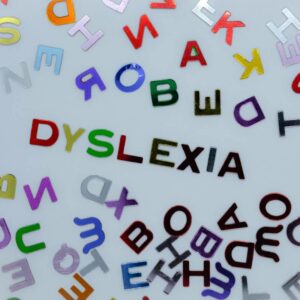Political Metaphor
The current political climate bears a striking resemblance to what I see as polarized “mindsets/belief systems” in education. Think of it as the liberals pushing for change and the conservatives pushing for sameness.
While a paradigm shift is clearly evident, especially in the past 10 years, driven by improvements in neuroimaging techniques, steadfast old school believers rear their heads from time to time. This is particularly concerning when these stoic individuals, who hang on to an outdated belief system regarding how to teach kids are actually educators, school administrators, and/or public school/private school board members.
The conservative movement is big on doing things the old way, not rocking the boat, preserving their style of teaching, resisting change, and asserting that some force other than their teaching style or educational philosophy is creating non-performers. The view is that lazy, unmotivated, apathetic, unfocused, slow kids who do not work hard enough, is the only force that contributes to a student not performing.
If you sell hammers, you will be even more likely to see everything as a nail.
The liberals embrace neuroscience and learning theory, encourage change, and understand that more personalized educational models work. These educational visionaries, incorporate technology and varied methodologies into their teaching styles, and empower all children with average cognitive efficiency to succeed. These change agents do not let “text” be the obstacle to learning for those with high intelligence and a poor ability to read. These professionals believe that if the student is struggling, the teacher must find a way to reach that child. In other words, the teacher failed. A great teacher once shared this belief with me: “If the student did not learn, the teacher did not teach.”
Again, the educational arena has its conservatives and its liberals. Liberals tend to embrace change, conservatives resist change. It seems that liberal agendas eventually prevail, and conservatives simply slow the inevitable. The world is not flat, the sun does not rotate around the earth, man did walk on the moon, evolution is real, global warming is something to be concerned about, isolationism is not practical in a global economy, and so on, and so on.
Science has figured out why smart children struggle: reading does not come easily for everyone. Fifteen to twenty percent of students exposed to traditional reading curriculum do not become good readers. Yet there are those among us who do not embrace science. These resistors of change assume that the children failing are just not smart, not motivated, not trying, not supported at home, etc. That is about as far from the truth as is possible. No child goes to school in the morning with a plan to not try, and fail. At least not until years of trying with no measurable success takes the wind out of their sails.
The era is here of understanding neurodiversity and responding appropriately in one’s teaching methodologies to different brain styles (i.e., embracing the neuroscience of how to be a great teacher). Almost all aspects of classroom behavior and learning characteristics (what is seen on the surface) are driven by neuroanatomical and neurophysiological variables. “Free will” is not as free as many believe when it comes to learning and succeeding in school. Succeeding in school is not easy for some smart children, regardless of their desire to do well. One sizes does not fit all as it relates to teaching methodologies. Casting any judgment on a child as it relates to what is expected of them based on what the “average brain can do” is simply archaic thinking. We all have a unique cognitive footprint. Understanding one’s cognitive footprint will explain most overt behaviors that may not be viewed as common reactions/behaviors (what average brains can do).
If one adopts the politics of change (let’s call this the liberal agenda), a second set of contaminants to truly helping and understanding the struggling student emerges. As in more general politics, there are pressures exerted within the liberal movement primarily driven by teachers and clinicians being uninformed or because they really believe they understand the true origins of learning challenges.
The personal agendas of those trained in, or fiscally linked to a particular product, do not always provide what is actually best for the struggling student. Practitioners tend to advocate for what they think is the best methodology. That is what they have been taught by developers who “sell” them on certain products. We could term them “lobbyists” for their personal agenda within the liberal community. They are often uninformed (ignorant) of other options and committed to their line of reasoning (their product), in that it maintains their paycheck/income flow. These folks become “salesmen” within the liberal party for what they believe is best for children, when in fact many other options may be more appropriate. Unfortunately, these care providers only see the needs of the child through their microscope, not through a telescope.
In a capitalist society, such as ours, we have difficulty using an unbiased agenda of what is truly best for a child due to the personal beliefs and interests of a few. This is the case with addressing neurodiversity reform and matching the most efficacious interventions, in the right sequence, with the particular characteristics of a child’s brain physiology.
Practitioners, by no fault of their own, become intellectually (they truly think they know what they are talking about based on a limited sample of knowledge) and fiscally attached to a particular modality of assisting with addressing neurodiversity. They tend to see things through their personal lenses (microscope view). These folks are not necessarily wrong, they are simply uninformed and scared to pass on work that they believe they can manage. If one’s only tool is a hammer- everything looks like a nail. If you sell hammers, you will be even more likely to see everything as a nail.
This is particularly true when intervening with the struggling reader. I am frequently asked by reading specialists, administrators in schools, related professionals, and parents which reading interventions are the best. The answer is all of the empirically-supported techniques are good; HOWEVER, some are better than others based on the child’s age, cognitive profile, current reading levels, attentional capacity, time availability, and fiscal resources of the parents.
Now, try telling this to someone trained in Lindamood Bell, Fast ForWord, Susan Barton, Wilson, Reading Recovery, Orton Gillingham, etc. Developing the right intervention to help a struggling reader should not be based on the opinion of a reading specialist trained in one single methodology. Many reading remediation techniques have shown clinical efficacy. Which one is right for a particular child should not be based on the opinion of someone who only knows one technique.
Furthermore, before pouring resources into a reading specialist, many times, lower-level cognitive skills need to be remediated first (such as somatosensory, sensorimotor, working memory, processing speed and phonological processing skills). Attempting to build reading skills on a shaky foundation of underlying cognitive systems will not yield great outcomes. Beyond just reading, the underlying cognitive hardware to comprehend words is as important, if not more important, than the reading of words.
Yet, those who sell widgets, will think everyone needs a widget. They do not know that one size does not fit all.This phenomenon is not only true with those who purport to teach children to read. Those who have a vested interest in treating ADHD or Autism unknowingly believe their methodologies are the cure for everything (e.g., occupational therapists, speech-language pathologists, behavioral therapists, pharmacologists, neurofeedback specialists, vision therapy, computer-based cognitive remediation programs, diets, supplements, hyperbaric oxygen chambers, meditation techniques, cognitive behavioral therapies, wilderness programs, boot camps, etc.). Everyone vested in one of these programs has a belief that what they have to offer, what widgets they sell, is the best thing on the market.
Addressing the brain styles of the neurodiverse requires the architect of the plan to not be attached to any single intervention, but to be aware of all methodologies, and write a prescription of what methodology, in what sequence, will be of greatest value in assisting the brain in question to function in an environment that requires somewhat different brain architecture. One may conclude that neuropsychologists and school neuropsychologists that have an in depth knowledge of the systems in the brain architecture underlying reading development are the “liberals” that should be leading the change and writing the prescription for cognitive and reading instruction. However, there will always be those that believe that neuro diagnostic testing (i.e., gathering the information necessary to create a path for success in an environment where one’s brain architectures do not match that required for traditional school) is a waste of time and money. These folks continue to believe that laziness and poor motivation are the problems, and that more practice, more tutors, and taking away privileges will result in better school performance. For the children of these folks, I feel pity and regret, as it is no fault of their own. Because this information was not available to my parents, I was one of these children.
Sincerely,
Coach Mike






